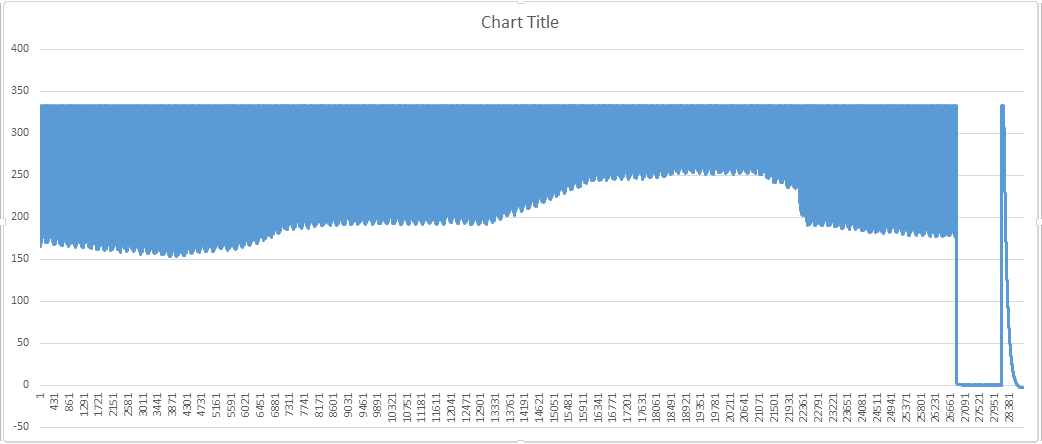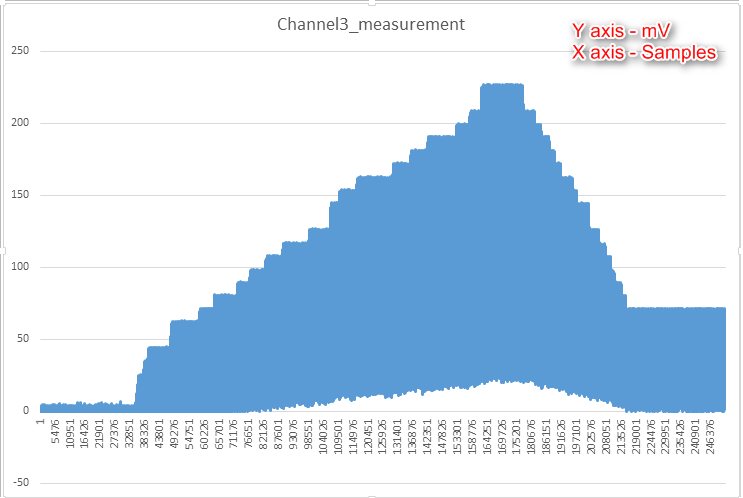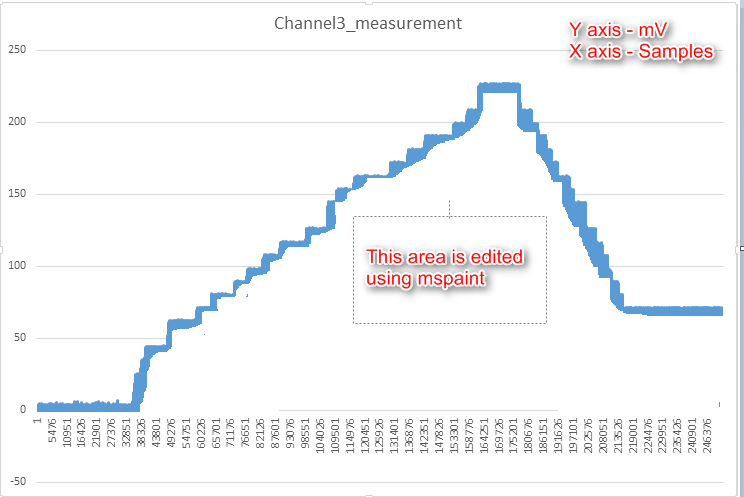Hello,
I am using ADS1296 to measure the DC output voltage from the Agilent U8002A single output DC power supply.
I have configured the ADS with the following,
Data rate :- 500 sps
Mode :- High Resolution mode
Gain :- 12
The input voltage was set to 80mV then it was slowly increased from 80mV till 160mV.
The measured values are then plotted in excel sheet. I was surprised with the plotted values.
I wanted to know why there is a fall in value, instead of the value stays constant?
Please comment.
Thanks,
Nimi







